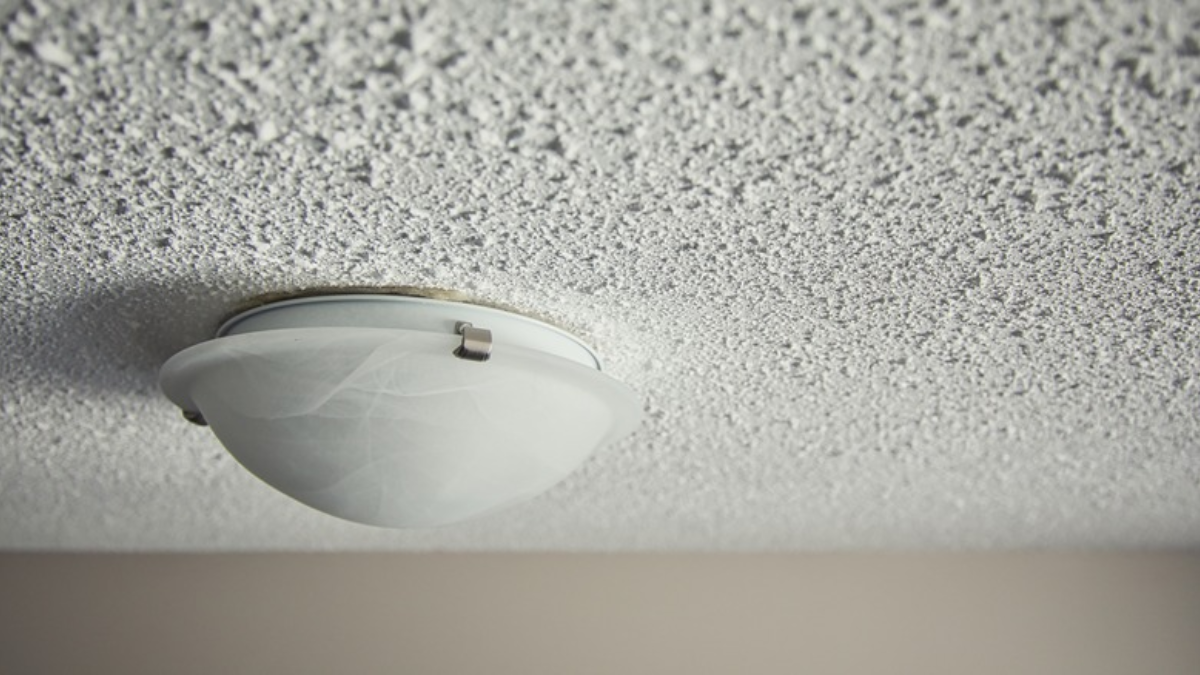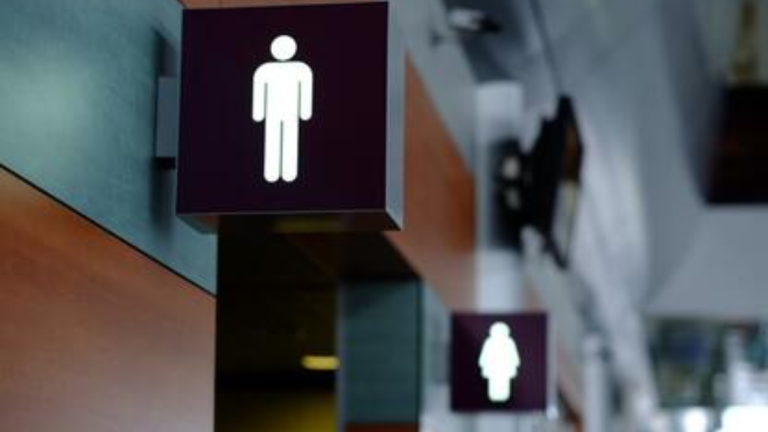What Led to the Popularity of Popcorn Ceiling?
During the 1970s, popcorn ceilings were all the rage and were frequently installed in homes from the 1950s through the 1980s. You’ve likely come across one of these textured ceilings in real life, as many of them can still be found today.
If your home features a popcorn ceiling, it’s essential to be aware of the potential issues with this popular design choice. While there are only a few problems associated with popcorn ceilings, it’s still essential to understand the risks and drawbacks of having this type of ceiling in your home.
Here is what you should be aware of regarding popcorn ceilings, ranging from the reasons behind their initial popularity to the potential health hazards they could pose today.
What’s the Purpose of Popcorn Ceiling?
Popcorn ceilings gained popularity for a multitude of reasons. Homeowners found many advantages in incorporating them into their homes.
Popcorn ceilings used to be a popular choice for soundproofing between rooms due to their ability to deaden sound. They were also cost-effective, making them a desirable option for residential buildings.
Back in the day, popcorn ceiling was a popular choice among homeowners because it had the added benefit of hiding any imperfections in the ceiling. As with other textured paint styles, the popcorn ceiling made it more difficult to detect any seams, bumps, or other flaws once the ceiling was completed.
Popcorn ceilings became incredibly popular due to their affordability and ability to improve the appearance of homes without significant costs.
It is essential to remember that popcorn ceilings were just one aspect of a widespread textured surface trend in homes. During that period, not only were ceilings textured, but walls were as well. Incorporating contrasting textures was a popular way to add visual interest and create a dynamic atmosphere in a room.
4 Reasons Why Popcorn Ceilings Are Not Ideal
While popcorn ceilings may have advantages, it’s important alsacknowledge the potential downsides. Here are some of the most frequent issues with popcorn ceilings.
1. Risks to One’s Health
Popcorn ceilings are widely known for their unique texture, but many people don’t know that they often contain a hazardous mineral called asbestos. Asbestos exposure can lead to various health problems, making it imperative to identify and remove it from your home if present.
If left undisturbed, asbestos is typically stable and poses little danger. However, this means you may be limited in what you can do with your ceiling without risking asbestos exposure. Even small actions like scraping off bits of popcorn ceiling can release harmful asbestos fibres into the air.
It’s essential to be cautious around ceilings that may contain asbestos, as there is no safe exposure to this harmful substance. If you suspect your popcorn ceiling was made of asbestos, it’s advisable to have it removed and replaced as soon as possible to avoid any potential health risks.
2. Lowering Home Values
Despite being a popular feature in the past, popcorn ceilings come with known risks that can lower the value of your home even when the top is in good condition.
Popcorn ceilings can pose a significant challenge when selling your home. Not only can they decrease the overall value of your property, but they can also make it harder to attract potential buyers. This is especially true if the buyer knows that popcorn ceilings are often made with asbestos, which can cause serious health concerns. Therefore, it’s essential to consider removing popcorn ceilings to ensure a smooth and successful home-selling process.
It’s worth noting that popcorn ceilings have fallen out of fashion in recent years. Although they were once a popular choice for homeowners, many now prefer the look of smooth, untextured ceilings with clean lines.
If you’re considering selling your home, removing the popcorn ceiling may be a wise decision. The cost of removing a popcorn ceiling averages around $2,000, but it could potentially increase the value of your home by tens of thousands of dollars. Check out our article on popcorn ceiling removal costs for more information.
Although there may not be any asbestos in your popcorn ceilings, it’s still possible for your home’s value to decrease due to its outdated and unpopular nature.
3. Maintaining These Can Be Challenging
Popcorn ceilings are notorious for their fragility and the difficulty of maintenance they require. These treatments are often too delicate to be cleaned without risking damage to the top and posing a potential health risk due to releasing asbestos fibres.
If your popcorn ceiling is starting to peel or shed, it can pose a risk to you and your family. This is especially true as these treatments age and break apart independently. Not only is it more challenging to maintain, but it can also become a safety hazard.
4. Challenging to Eradicate
Removing popcorn ceilings can be daunting due to the ease with which asbestos fibres can be released. The treatments applied to these ceilings were meant to last, making it difficult to paint over them.
Removing popcorn ceilings can be daunting, especially if they contain asbestos. To ensure the safe removal of asbestos fibres, hiring a professional asbestos abatement team knowledgeable in handling this material is best. They will use the appropriate techniques to remove all traces of asbestos from your home, giving you peace of mind that your living space is safe and healthy.
Once the popcorn ceiling has been removed, you can replace it with a new colour or ceiling treatment. This allows you to create a fresh and updated look in your space.
Benefits Of Popcorn Ceilings: Exploring The Pros And Cons
Although popcorn ceilings have their fair share of problems, they still offer some benefits.
Popcorn ceilings that are in good condition are generally considered safe. Maintaining the popcorn treatment and avoiding disturbing it is essential; otherwise, there’s no need to be concerned.
If you have popcorn ceilings, you may not know they offer a bonus – sound-cancelling properties. These ceilings work wonders in preventing sound from travelling between floors or rooms. So, not only do they add a unique texture and design to your space, but they also provide a practical benefit.
Removing popcorn ceilings in your home can have an unexpected consequence – increased noise levels. You may notice a significant difference in the noise level unless you install additional soundproofing measures.
If you have popcorn ceilings in your home, you may have noticed that they give off the appearance of a smoother and more even surface. However, once you remove the popcorn texture, you may find flaws in your ceiling that were previously hidden. While these issues are typically only cosmetic and don’t require any additional treatment, they may be more noticeable with a new roof.
What’s the Verdict on Popcorn Ceilings?
Popcorn ceilings are not a problem until they begin to deteriorate. So, if you have popcorn ceilings and enjoy their look, there’s nothing wrong with that.
If your popcorn ceilings are showing signs of wear and tear or you’re considering replacing them, there are a few steps you should take.
Before making any changes to your popcorn ceilings, having them professionally tested for asbestos is essential. If you discover that your roofs contain asbestos, you should plan for the additional cost of having them removed. On the other hand, if the test results come back negative for asbestos, you can move forward with your plans for your ceiling without any concerns. This will give you peace of mind and allow you to focus on the renovation without worrying about potential health hazards.
It’s important to note that while it is possible to make popcorn ceilings without asbestos, it is rare to find them since most were installed when asbestos was widely used in construction. If you’re unsure whether your popcorn ceiling contains asbestos, it’s better to err on caution and have it tested to ensure your safety.
It’s essential to handle your popcorn ceiling as if it has asbestos until you get it tested and proven otherwise. Safety should be your top priority when dealing with this type of ceiling.
Also Read:
- A Comprehensive Guide to Asbestos Popcorn Ceilings (2023)
- Guide to Asbestos Siding (2023)
- A Guide For Removing Popcorn Ceiling (2023)







